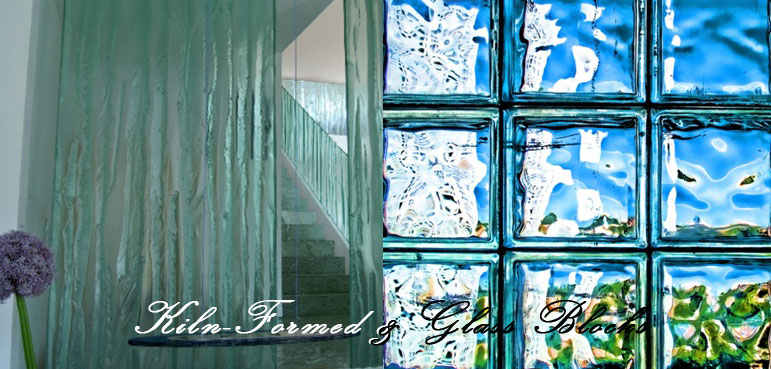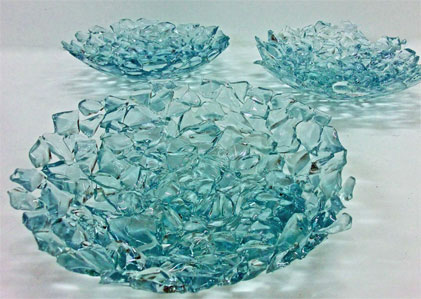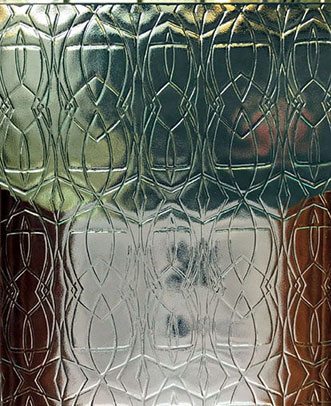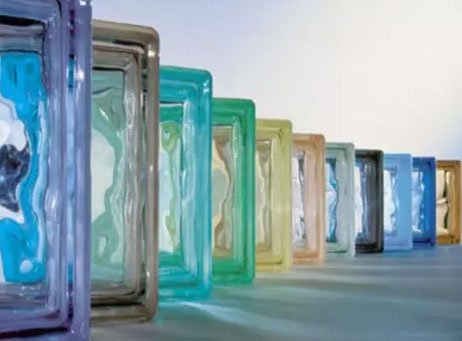Home » Blog » Kiln-Formed Glass, Glass Blocks & Patterned Glass Explained
Posted on : 20-09-2022 Author : Monisha Murmu

Present-day architects have created a unique relationship between glass and buildings. Many new patterns and possibilities have emerged in the construction industry. Each day, you see a new architectural marvel that involves glass, used as a construction material, in some form or other. Due to its high recycling value, varied properties, and uses, glass is now extensively used everywhere.

As the name suggests, this glass is made using a kiln. This is a very ancient technique, originating in Egypt, nearly 4000 years back.
In this process, heat and gravity are used to shape and join glass as desired. When glass is heated to very high temperatures in a kiln, it turns into a honey-like substance. As the temperature increases, glass becomes more liquid. At this stage, it can be fused, slumped, combined, molded, sagged, or cast, as required. This liquid glass fills the space in which it is contained and fuses easily with other pieces of compatible glass. Once it is cooled down to room temperature, the glass resumes its crystalline structure in the shape of the container.
Kiln-formed glass is mainly used as decorative art glass in high-end offices, hotels, and modern residences. This glass can be found in building facades, lift lobbies, foyers, balustrades, doors, and counter-panes, to name a few. Kiln-formed glass provides an excellent opportunity for artisans to showcase their talent, ranging from drawing and painting to print-making, sculpting, and much more.

Introduced by Victorian glass makers, patterned glass has been in use for a long time. Also called obscured glass, textured glass, or figured glass, patterned glass is characterized by patterns or textures that are embossed onto one or both sides of the glass pane. Patterned glass adds beauty and light to the interiors. Different designs and patterns, right from simple to intricate, offer varying degrees of privacy, light transmission, and decoration.
To make patterned glass, the molten mass of liquid glass is passed through two metal rollers, during the time of manufacture. One of these rollers is embossed with the desired pattern. As the glass mixture flows through the rollers, the specific design is printed onto it and the glass is squeezed into the required thickness and smoothness. The glass rapidly solidifies and the pattern is etched into it. Next, any stress caused during the rolling process is removed through annealing. Once the patterned glass has cooled down, it becomes strong and durable, thus making it easy to cut into desired shapes and patterns without shattering.
In today’s world, patterned glass graces both commercial and residential buildings. Patterned glass is mostly used for windows and doors, bathroom shower doors, shelves, floor panels, partitions, lampshades, tables, and privacy walls.
Block glass or glass block is also known as glass brick. It is a small piece of glass with a thickness of 2”-3”. It looks like a building block and offers elegance, style, a lot of light, and visual opacity. They also provide thermal and sound insulation.

Glass blocks are made mainly from recycled glass which is called cullet. The molten glass is cut into the required portions and passed into the molds. The molten mixture is pressed down into the shape of a half block and the desired pattern etched onto it. Next, it is quickly cooled down to retain its shape. The sealing machine joins two half blocks to make a full block. Finally, an alkali solution is sprayed onto the sides of the block.
Glass blocks are usually in the shape of a square. However, they can also be made into three-dimensional shapes such as hexagons and end blocks for curves. In recent times, glass blocks come in varying sizes, shapes, textures, colors, and forms. Typical sizes of glass blocks available today are 4x8”, 6x8”, and 8x8” in dimension. Glass blocks can be of different types such as frosted, see-through, horizontal, vertical, crystalline, grid, and many more.
The main use of block glass is in interior design as it can be easily customized to suit customer needs. It is used for bathroom privacy walls, floors, corridors, balconies, exterior wall cladding, and wall panels. However, glass blocks are brittle, non-load bearing, and can easily shatter in earthquake-prone regions.